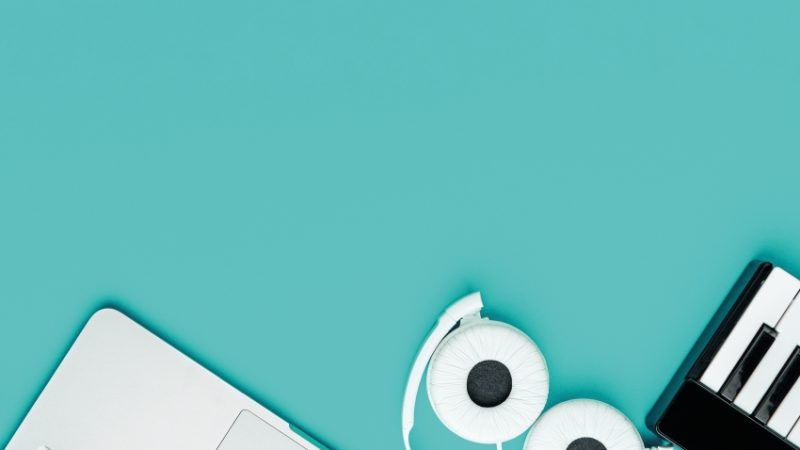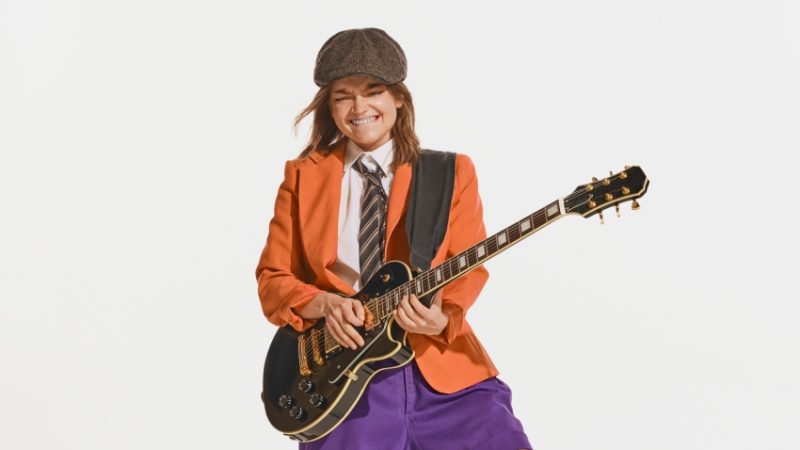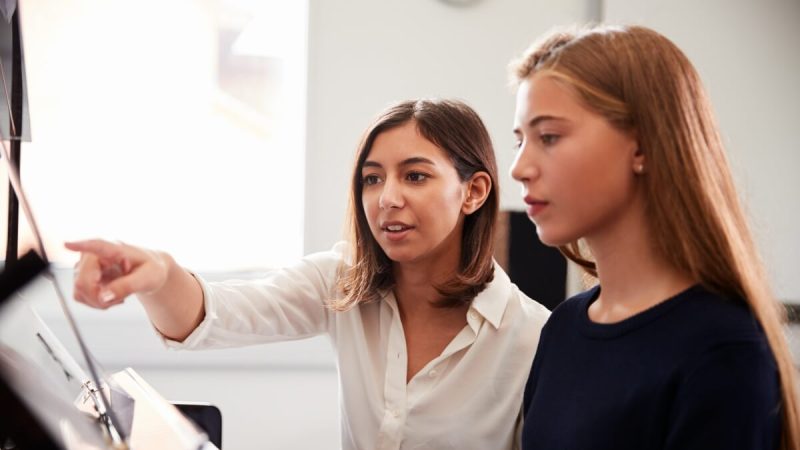KS3 music – Engage your students by helping them become producers
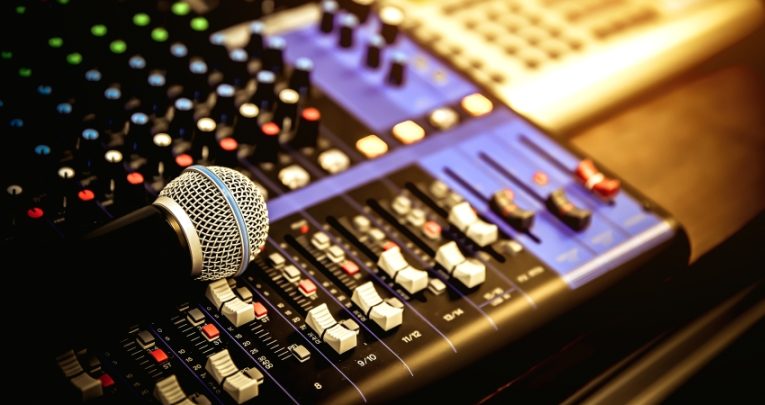
If KS3 engagement in your music lessons is lacking, introducing them to music production can help you meet them where they are…
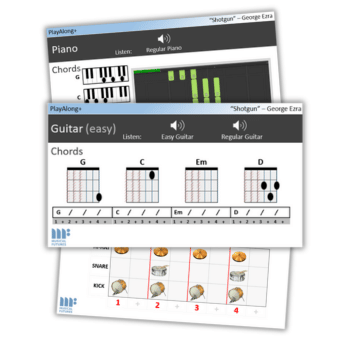
Music has wide appeal and plays an important part in many people’s lives. As an academic subject, however, it can see wildly varying levels of engagement in class – particularly at KS3, where there can often be a strong culture of non-learning driven by peer pressure.
Whilst navigating the requirements of the curriculum, we should seek out opportunities for personalising students’ learning as much as possible. Student-centred teaching can be challenging, but the payoff is worth it. It involves teaching according to how the student learns, and tailoring the delivery accordingly.
Ensuring that lesson content is relevant to the individual is, I believe, the most effective way of harnessing their intrinsic motivation to learn in music lessons and enabling them to thrive. Allow learners to participate in ways that are meaningful to them.
One way of doing this can be to incorporate different music genres into lessons. Do they listen to rap music on their way to school? Do they attend indie-rock gigs at the weekend? Are they into drum and bass? Everyone will have their own interests, so try to meet them where they’re at, rather than imposing upon them a style of music that sounds alien to their ears.
Practice needn’t make perfect
If you’re a professional, or have ever spent considerable time perfecting a skill or talent, it’s easy to forget how hard it can be to practice, and how deflating the process can be. You may well have some students who are applying themselves to mastering an instrument, but also many more who have no interest in bettering their music skills, and feel under pressure to perform.
You’re not going to have a homogenous student group, and it’s not necessarily everyone’s goal to become the next Jimi Hendrix or Freddie Mercury – but they can all contribute to creative tasks.
If a student has ownership of their learning, they’ll be that much more motivated to engage – so try turning the process of practising into a hands-on, problem-solving exercise that involves peer-to-peer interaction and teamwork.
The wealth of technology now available in classrooms opens up the possibility of ‘gamifying’ students’ learning with the aid of interactive music tools such as Soundtrap, or music-based apps such as Groovebox, iReal Pro, Piano Motifs, Chord Wheel, InTune, Amazing Slowdowner, Topline, Nail The Pitch and many more.
The bigger picture
Studying music can facilitate further learning in other subjects too. Music can be an integral part of a student’s educational journey, so help them to make the most of this across the board. Try drawing upon other subjects in music lessons and vice versa.
Allow students to gain an understanding of how music is made not just through listening and performing, but also through analysis and producing a broad range of musical styles, genres and instruments. The playing and performance side of the subject might leave your students cold, but as technology and communication expectations have improved, the processes of music production may appeal more.
Moreover, this can be achieved without an eye-watering price tag. According to Stu Brewer, a production and guitar lecturer at the HE music teaching provider WaterBear, “I’ve worked in secondary education at various schools, and have seen the curriculum and budgetary pressures schools are under.
“However, a combination of cloud-based resources, and music technology companies shifting their focus to future music makers, has led to cost-effective, often even free solutions that are suitable for schools wanting to engage their students in the world of music production.”
Ease of access
Established companies such as Ableton and Roland now offer free, web-based resources for those interested in learning about sequencing and beatmaking techniques, allowing virtually any internet-capable device to access quality music-making resources without the need for additional expenditure.
Akai is a company that’s become synonymous with the process of sampling and its adoption by urban genres. It has developed a free to access, online version of its legendary MPC sampler, MPC Beats, which introduces students to pattern-based music creation and also provides learning tools to help students further explore musical techniques relating to recording and programming.
Ableton, meanwhile, includes a ‘Lite’ version of its renowned Live software with purchases of its dedicated hardware and apps, enabling students to learn about clip-based recording. This approach is good for students unfamiliar with traditional music theory, with its emphasis on creating and manipulating blocks of sound, rather than the more linear layouts of other recording software.
These companies also produce feature-rich versions of their recording software specifically designed for tablet devices, and fully compatible with desktop setups. These not only put a multitude of different sounds at students’ fingertips, but also enable them to create complete tracks using only the kind of tactile, touch-based interface they’ll already be familiar with.
Get creating
By exploring alternative approaches to recording, students can become highly engaged in the methods and techniques used to create the music that speaks to them. See trap music, for example, and how its trademark frenetic hi-hats and distinct rhythms can be re-created using the sequencer functions found in the aforementioned software packages.
This can be instantly gratifying for students, while fostering their creativity – and also lets students decide where they want their adventures in production to go, rather than always being led by the teacher. It reduces the amount of time teachers need to spend one-on-one with each student, while at the same time boosting their sense of personal satisfaction and achievement.
In terms of hardware, the cost of recording interfaces – modules that enable computers to make high quality recordings of microphones, keyboards, guitars and other instruments – has plummeted. Focusrite’s Scarlett range lets users connect multiple mics and instruments into one device simultaneously, and works with both computers and tablets. And if the cost of a sound interface is still too prohibitive, you can still get usable results from your recording device’s in-built microphone.
There are whole subgenres centred around lo-fi recording techniques and found sounds. In my own experience, non-traditional capturing techniques that utilise a smartphone’s microphone, for example, can do lots to spark students’ creativity.
The impact of easily accessible recording technology is really being felt at further and higher education. What we’re seeing at HE are producers who possess few ‘traditional’ skills at playing an instrument, but can still produce fantastic music.
The common consensus from my students is that the spark for this exploration often begins at secondary level. It doesn’t need advanced tech to make that happen, but an emphasis on music making that’s immediate and accessible certainly helps.
Whole school harmony
Maths
Time signatures, especially compound time, can aid understanding of division – for instance, via rhythmical activities based around dividing bars and demonstrating this through clapping.
Science
Why not use music to explore the science of sound? The physics behind how instruments function is genuinely fascinating.
Art and design
Task students with creating an artwork that depicts a song of their choice or one chosen for them, taking into consideration style, colour and texture.
English
Encourage students to analyse and/or create song lyrics in their favourite musical genres.
History
Add a different dimension to history lessons with learning activities centred on musical genres through the ages. Encourage class discussion, and set students the challenge of matching music clips to specific eras.
Kaya Herstad-Carney is singer, songwriter, senior lecturer and performance coach; for more information about WaterBear, visit waterbear.org.uk








